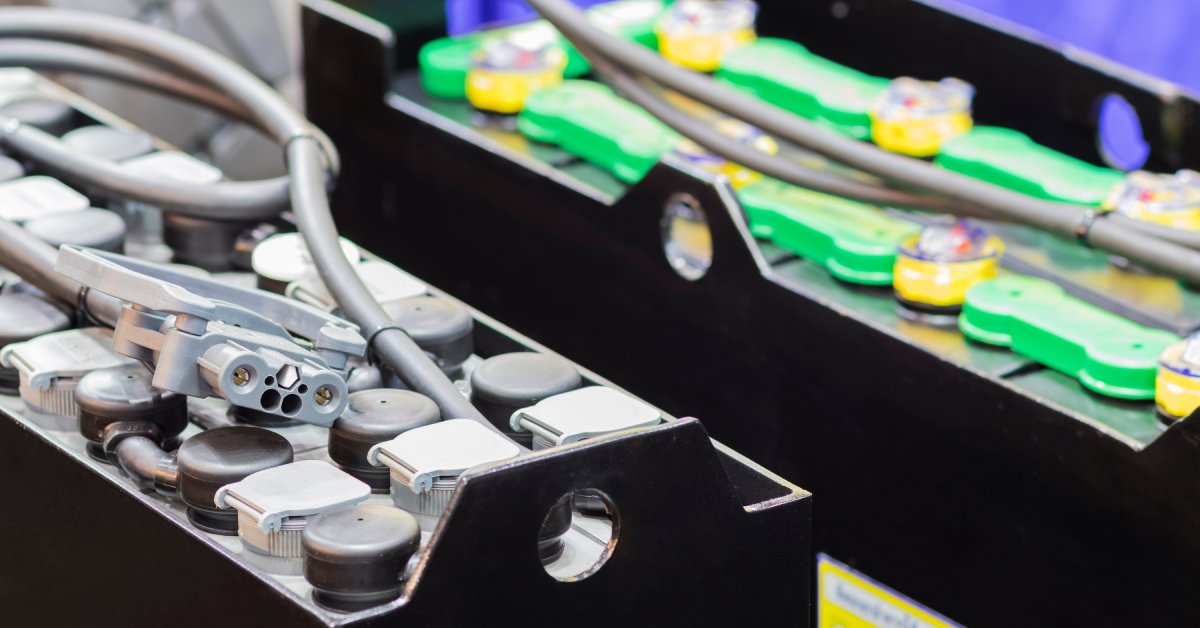Golf carts rely heavily on their batteries, providing the power needed to drive around the greens or transport goods seamlessly. However, these batteries can sometimes face the dreaded issue of going completely dead.
If you're dealing with a seemingly lifeless golf cart battery, you might be wondering if there's any hope of reviving it. But can a completely dead golf cart battery be recharged? We'll explore this question, discussing how to assess their condition, ways to potentially recharge them, and preventative measures to keep them running efficiently.

Common Causes of a Dead Golf Cart Battery
While it can be annoying to be stuck with a dead battery, ascertaining the underlying causes can help to prevent it from happening in the future.
Lack of Use
Golf cart batteries thrive on use and regular charging. If your battery has been sitting idle for an extended period, a lack of use can result in a significant loss of charge. Over time, this inactivity can lead to sulfation, a process that may render the battery inoperable.
Overcharging
While it might seem counterintuitive, overcharging a golf cart battery can be just as detrimental as neglecting it. Consistently leaving the battery on the charger for too long generates excess heat, which can degrade the internal components and shorten the battery's lifespan.
Poor Maintenance
Skipping regular cleaning, neglecting fluid levels, or ignoring voltage checks can also leave your battery in poor condition. Dirt or corrosion on battery terminals can disrupt the electrical connection, while low electrolyte levels can cause irreparable damage.
Aging
Batteries naturally degrade over time, and golf cart batteries are no exception. After years of use, they may no longer hold a charge effectively, regardless of how well you maintain them. If your batteries are aging, it may be time to replace them with new ones.
Extreme Temperatures
Extreme temperatures can also affect the performance and lifespan of your golf cart battery. High temperatures can cause faster evaporation of electrolyte fluid, while cold temperatures reduce the battery's ability to hold a charge. Be mindful of storing or using your golf cart in extreme weather conditions.
Understanding Battery Death
Not all "dead" batteries are equal. To determine if there's a chance to recharge your golf cart battery, it's important to distinguish between a deeply discharged battery and a truly dead one.
Deeply Discharged Battery
Deep discharge occurs when the battery voltage drops below the recommended level but remains recoverable. With proper techniques, a deeply discharged battery can often be revived.
Truly Dead Battery
A battery is considered truly dead when internal components, like cells or plates, are damaged beyond repair. This type of battery cannot be recharged and will need replacing.
Initial Assessment of the Battery
Before attempting to recharge the battery, conduct a few simple checks to diagnose the situation. First, use a multimeter to measure the battery's voltage. If the voltage is below the recommended threshold, the battery is likely discharged.
Next, look for cracks, leaks, or bulging. Any physical deformities are a sign the battery is unsafe to revive and should be replaced. You will want to inspect the terminals for dirt, corrosion, or loose connections. Clean them with a mix of baking soda and water if you spot buildup.
Finally, if the battery uses liquid electrolytes, ensure the fluid level is adequate. Use distilled water to top off the cells if necessary, but avoid overfilling.
Attempting To Recharge the Battery
Once you've assessed the battery and found it to be safe, you can attempt recharging using the following methods:
Method 1: Use a Smart Charger
A smart charger provides a controlled charge and is capable of reviving mildly discharged batteries. Connect the charger to the battery terminals and allow it to restore the charge gradually.
Method 2: Parallel Charging
If the battery voltage is extremely low, it may not be recognized by a standard charger. Connect the discharged battery in parallel with a fully charged one, then hook both to a charger. This technique can help the dead battery reach a voltage level where it can charge normally.
Method 3: Boost Charging
For deeply discharged batteries, a boost charger delivers a high initial current to jump-start the charging process. However, this method should be used with caution, as it may shorten battery life if overdone.
When To Replace the Battery
If your efforts to recharge the battery fail, it may be time to invest in a new one. Here are some signs the battery is beyond saving. First, if the battery consistently fails to maintain its charge despite repeated attempts at recharging, it's a clear indicator that it may need replacement.
Next, thoroughly inspect the battery; if you can see corrosion on the terminals or casing that cannot be cleaned effectively, that can signify extensive internal damage. A swollen or cracked battery case is another sign of internal malfunction, often caused by extreme temperatures or severe overcharging. And a battery emitting a strong sulfuric or rotten egg smell might have internal leaks or other serious issues, warranting replacement.
Last, consider the age of the battery. Most batteries have a limited lifespan, typically between 3 to 5 years. If the battery exceeds this timeframe, it's more likely to fail.

What To Look for in a New Battery
When purchasing a new golf cart battery, consider these factors:
- Voltage and capacity: Ensure the battery meets the voltage and amp-hour requirements of your golf cart.
- Type: Choose between flooded lead-acid, AGM (absorbed glass mat), or lithium-ion batteries based on your budget and needs.
- Durability: Look for batteries designed to withstand wear and tear, including heavy usage and vibrations.
- Warranty: A longer warranty provides peace of mind and can save you costs in the long run.
- Cost: Compare prices and value for money but prioritize quality over savings to avoid frequent replacements.
Preventative Measures for Longer Battery Life
To avoid the hassle of dealing with a dead golf cart battery in the future, follow these tips to prolong its life:
- Charge regularly: Keep the battery charged, even during periods of non-use, to prevent deep discharges.
- Monitor voltage: Check voltage levels consistently and recharge before they drop too low.
- Clean terminals: Regularly clean the battery terminals to ensure good connections.
- Maintain fluid levels: Check and top off electrolyte levels with distilled water as needed.
- Use the right charger: Invest in a smart charger that matches your battery type.
- Store properly: During off-season storage, ensure the battery is fully charged and kept in a cool, dry place.
With these tips in mind, you'll have a battery you can depend on for all your outings.
Reviving and Maintaining Golf Cart Batteries
While reviving a completely dead golf cart battery is possible in some scenarios, success largely depends on the condition of the battery and your willingness to troubleshoot. Knowing whether a completely dead golf cart battery can be recharged will help you make the right decision when it matters most.
If your battery proves to be beyond repair, don't wait to get it replaced. At PowerHouse Lithium, we've got you covered. Our stock of lithium 12v batteries is sure to have the perfect solution for your golf cart or other energy demands. Whether replacing or upgrading, you'll be happy with the results you see.

